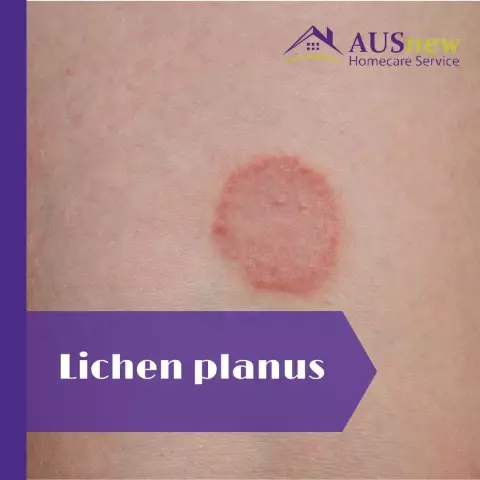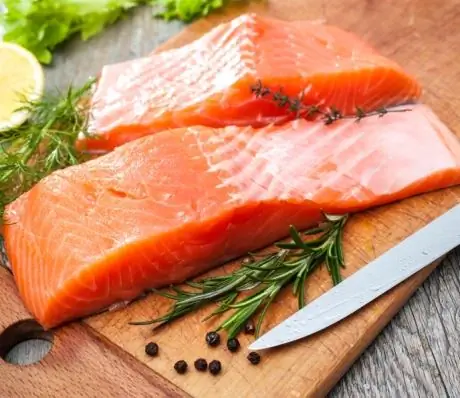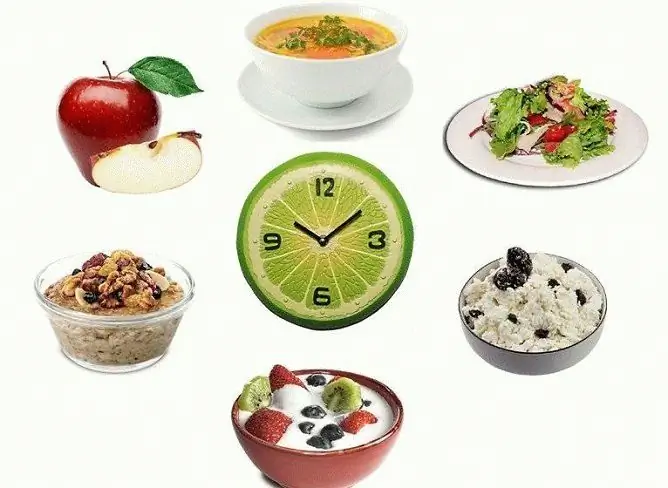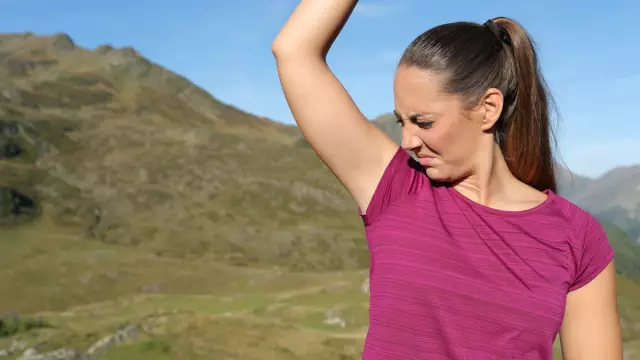- Author Rachel Wainwright [email protected].
- Public 2023-12-15 07:39.
- Last modified 2025-11-02 20:14.
Lichen pink
Brief description of the disease

Pink lichen is an infectious and allergic disease, which is accompanied by the appearance of rounded, flaky pink spots (which is why it, in fact, got its name). Most often, the disease affects children and young people in spring and autumn. The risk of "catching" the infection increases with hypothermia of the body, decreased immunity and the use of personal belongings of a sick person (comb, washcloth, towel). Pink lichen in children and adults is contagious, but, as a rule, it is transmitted only to people with reduced immunity, while a healthy, full of strength person can safely contact a sick person.
It is now generally accepted that lichen rosacea, which in most cases is treated at home, is of a viral nature and is caused by a type of viral herpes.
Pink lichen - symptoms and development of the disease
The presence of infection can be determined in the early stages by the appearance of a lonely rounded pinkish spot, however, in most cases people do not attach any importance to it, and therefore the disease is detected quite late. Within 7-10 days, lichen rosacea in a person spreads throughout the body and leads to a rash of many small spots. They concentrate on the sides of the torso as well as on the back, chest and thighs.
The spots itch and peel off, however, without causing any particular discomfort. In some cases (quite rarely) lichen rosacea in children and adults leads to an increase in body temperature, swollen lymph nodes, joint pain and general malaise. The edges of the spots are free of scales. Because of this, they are often compared to medallions. They quickly increase in size, but do not merge, they have clearly defined boundaries. The duration of the disease is 6-9 weeks.
Pink lichen - treatment with traditional methods and folk recipes
It has now been proven that lichen rosacea in humans does not require any special treatment, since the infection goes away on its own. As a rule, it is not possible to shorten the period of the rash, therefore, the treatment of pink lichen consists in relieving unpleasant itching and using a hypoallergenic diet. Citrus fruits, chocolate, eggs, alcohol, red fruits, tea and coffee are excluded from the usual diet. Pink lichen, the symptoms of which are severe enough, can be treated with physiotherapy and antihistamines, but, as mentioned above, the need for them is extremely rare.

In order to reduce the spread of stains, you should temporarily stop washing with soap. In addition, you should not comb and rub the damaged areas of the skin. It is advisable to wear cotton underwear as synthetics and woolen items increase skin maceration.
When diagnosed with pink lichen, treatment with folk remedies is also not necessary, but herbs and infusions can relieve itching and reduce the rate of spread of the infection. Patients are advised to lubricate damaged skin areas with peach, sea buckthorn, St. John's wort or rosehip oil 6-7 times a day. For internal use, infusions or decoctions of licorice root are used.
Pink lichen in humans completely disappears in about a month after the appearance of the first, "maternal" spot. The infection manifests itself once in a lifetime. Relapses do occur, but very rarely and only in people with weakened immune systems.
Pink lichen in children
Most often, the onset of infection occurs between the ages of 4 and 15 years. In children with a susceptible diagnosis of lichen rosacea, the symptoms are expressed slightly differently than in adults. Rashes are characterized by a tendency to eczematization and more pronounced exudation. In addition, in childhood, the presence of vesicular and urticarial rashes is often noted, which deliver unpleasant sensations and are very itchy. Pink lichen in children has one more feature. It often appears not only on the face, thighs, or sides of the torso, but also on the scalp. In this case, individual spots merge into one large lesion with concomitant polyadenitis.
As with adults, childhood infections do not require any special treatment and go away on their own. The child is prescribed a hypoallergenic diet and it is forbidden to wear clothes made of synthetic or woolen fabrics.
The washing process should take place without adding any cosmetic additives to the water. It is best to give up the bath for a while and wash the baby in the shower. Ointments, oils, or apple cider vinegar are used to relieve itching. The infection does not leave any consequences after itself, and in general it is absolutely harmless. Some concern can only be caused by an increase in temperature, but it is short-lived and is the body's response to irritation.
YouTube video related to the article:
The information is generalized and provided for informational purposes only. At the first sign of illness, see your doctor. Self-medication is hazardous to health!






